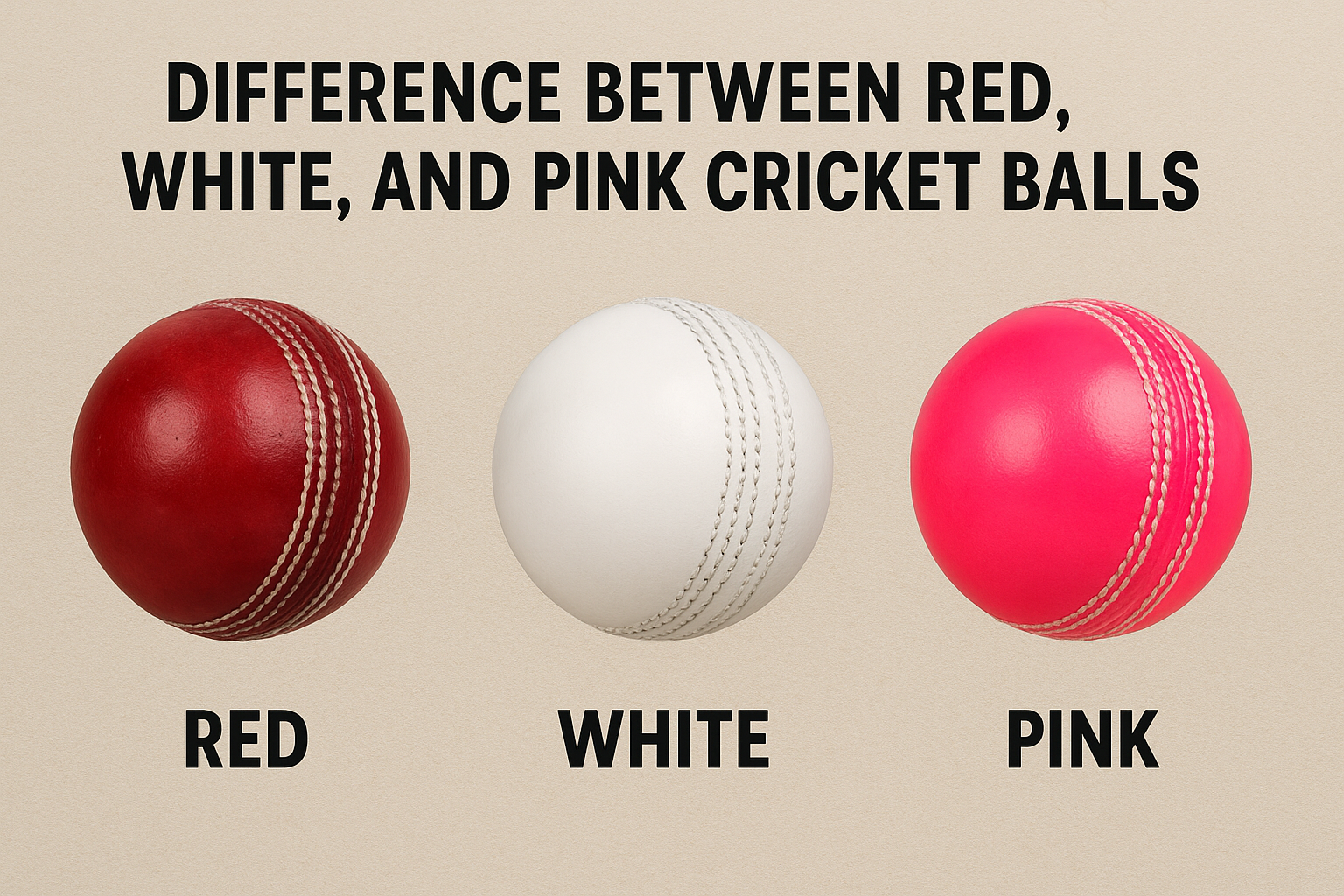Cricket is growing fast in the United States, and as more players pick up the sport, one question pops up often: Why are cricket balls different colors—red, white, and pink?
Each color isn’t just for looks. It’s designed for a specific format, visibility condition, and playing experience. If you're new to cricket or transitioning from baseball, this guide breaks it down in a simple, USA-friendly way.
Red Cricket Ball – Tradition & Endurance
The red ball is the oldest and most traditional cricket ball. It’s used mainly for:
-
Test matches (5-day games)
-
Long-format first-class cricket
Why Red?
Red leather holds its color well under sunlight, making it perfect for long daytime matches. It also maintains its shine and seam longer, which matters a lot because the behavior of the ball—swing, seam, reverse swing—changes based on wear.
How It Performs:
-
Offers consistent swing early on
-
Seam stays firm, helping bowlers extract movement
-
Becomes softer over time, helping batters score more freely later in the game
For purists, the red ball represents the true test of skill between bat and ball.
White Cricket Ball – Made for the Spotlight
The white ball is the superstar of limited-overs cricket, especially in:
-
ODIs (50-over matches)
-
T20 cricket, including Major League Cricket (MLC) in the USA
Why White?
Under stadium lights, a white ball is much more visible to players and spectators compared to red. This matters in shorter, high-energy night games—exactly the style popular today.
How It Performs:
-
Swings less than a red ball
-
Gets dirty and loses color faster
-
Begins to lose shine quickly
-
Designed for power-hitting formats, favoring batters
White balls are built for entertainment—big hits, fast wickets, and high visibility.
Pink Cricket Ball – The Night-Test Specialist
The pink ball is the newest entrant, created for:
-
Day–night Test matches
Because Test cricket can now be played partly under lights, red balls aren't visible enough. White balls can’t last long enough for five-day matches. The solution? Pink.
Why Pink?
Pink offers the best visibility under artificial lights while still being durable for long-format cricket.
How It Performs:
-
Swings more than white balls
-
Harder lacquer for durability
-
Maintains color longer than white
-
Can behave unpredictably under lights, making the game exciting
Pink-ball Tests are a fan favorite because they blend the tradition of Test cricket with the thrill of night-time sport.
So Which Ball Should You Use in the USA?
If you're playing recreational or league cricket in the U.S.:
-
Use red balls for long weekend matches or practice.
-
Use white balls for T20 or 40-over formats, especially under lights.
-
Use pink balls if your league hosts day–night longer formats (some U.S. leagues now do!).
Each ball brings a different challenge, making cricket one of the world’s most dynamic sports.
